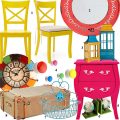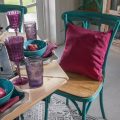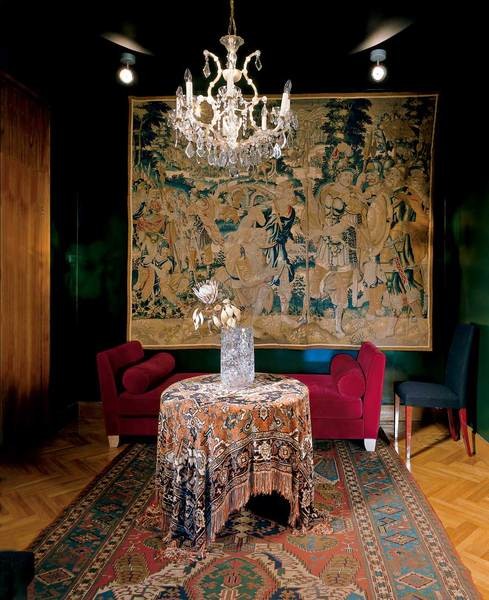 Art objects1.MODEL THE SITUATION WITH LIGHT! Thanks to directional theatrical lighting, the pearls of your collection will not go unnoticed. If too bright rays are harmful to them, you can choose a workaround, as Andrew Paulson, publisher of the magazine "Afisha", did. In the hall of his apartment, the spotlights are directed not at the 16th-century tapestry, but at the chandelier hanging nearby. The light falls on the precious canvas, reflecting off its crystal pendants, and the shadowed corners of the room only emphasize the drama of the mise-en-scène.
Art objects1.MODEL THE SITUATION WITH LIGHT! Thanks to directional theatrical lighting, the pearls of your collection will not go unnoticed. If too bright rays are harmful to them, you can choose a workaround, as Andrew Paulson, publisher of the magazine "Afisha", did. In the hall of his apartment, the spotlights are directed not at the 16th-century tapestry, but at the chandelier hanging nearby. The light falls on the precious canvas, reflecting off its crystal pendants, and the shadowed corners of the room only emphasize the drama of the mise-en-scène.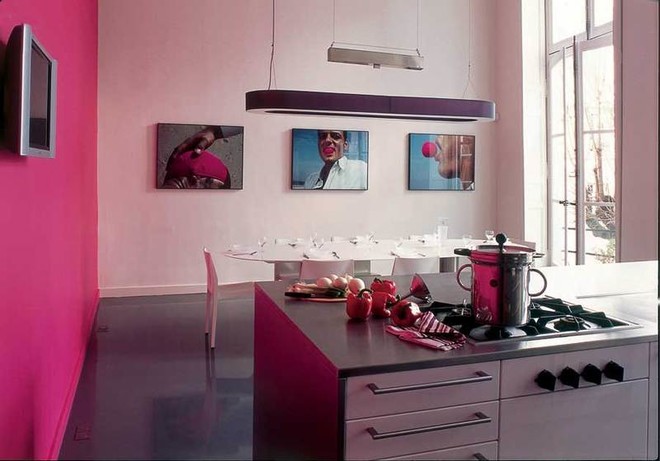 Art objects in the interior2. START FROM THE END! A place for works of art is usually chosen when the repair in the apartment is already completed. But if you go on the contrary, the result will be much more interesting. Thus, the Paris decorators Pauline Manse and Francois-Xavier Bourgeois arrived. Images from the film Annika Larson prompted them to color the whole interior. On each of the three shots there was a fuchsia-colored ball. Balls and encouraged designers to think of dyeing one of the walls in this color. And glossy paint, which reflects light well and throws crimson reflexes on all objects around.
Art objects in the interior2. START FROM THE END! A place for works of art is usually chosen when the repair in the apartment is already completed. But if you go on the contrary, the result will be much more interesting. Thus, the Paris decorators Pauline Manse and Francois-Xavier Bourgeois arrived. Images from the film Annika Larson prompted them to color the whole interior. On each of the three shots there was a fuchsia-colored ball. Balls and encouraged designers to think of dyeing one of the walls in this color. And glossy paint, which reflects light well and throws crimson reflexes on all objects around.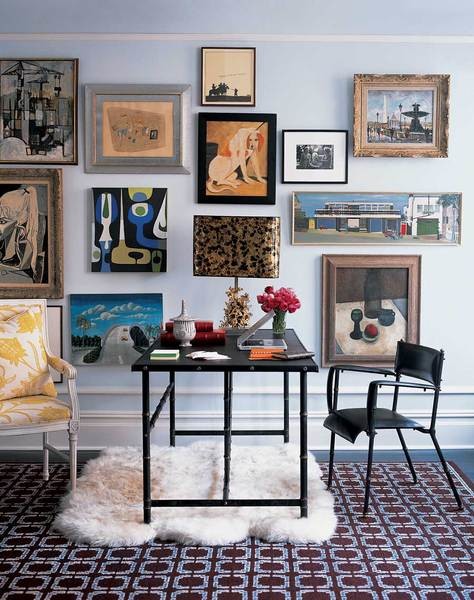 3.DON'T NEGLECT TRADITION! Just because tapestry hanging was widely used in the 19th century doesn't mean it's outdated by the 21st century. On the contrary, it's very popular today because it looks effortless. But keep in mind: hanging pictures so that they look good together is much more difficult than it seems at first glance. If you're unsure of your abilities, follow the example of the owner of this Manhattan apartment - consult a designer or gallery owner.
3.DON'T NEGLECT TRADITION! Just because tapestry hanging was widely used in the 19th century doesn't mean it's outdated by the 21st century. On the contrary, it's very popular today because it looks effortless. But keep in mind: hanging pictures so that they look good together is much more difficult than it seems at first glance. If you're unsure of your abilities, follow the example of the owner of this Manhattan apartment - consult a designer or gallery owner. 4.DON'T BE AFRAID OF AN ACTIVE BACKGROUND! Until recently, neutral white walls were considered the ideal background for art. All they had to do was not to interfere. No one denies the classical clarity of this position, but times are changing. Today, the background can not only accompany the work, but also enter into an active dialogue with it, as happened in the apartment of fashion historian Tiffany Dubin. At first glance, a wall with wide purple stripes is not the best complement to the painting. But Tiffany thought otherwise. In fact, both furniture and accessories - everything in this room is in close contact with the painting. If this contact becomes too intrusive, it can always be interrupted by rolling up the walls with white paint!
4.DON'T BE AFRAID OF AN ACTIVE BACKGROUND! Until recently, neutral white walls were considered the ideal background for art. All they had to do was not to interfere. No one denies the classical clarity of this position, but times are changing. Today, the background can not only accompany the work, but also enter into an active dialogue with it, as happened in the apartment of fashion historian Tiffany Dubin. At first glance, a wall with wide purple stripes is not the best complement to the painting. But Tiffany thought otherwise. In fact, both furniture and accessories - everything in this room is in close contact with the painting. If this contact becomes too intrusive, it can always be interrupted by rolling up the walls with white paint!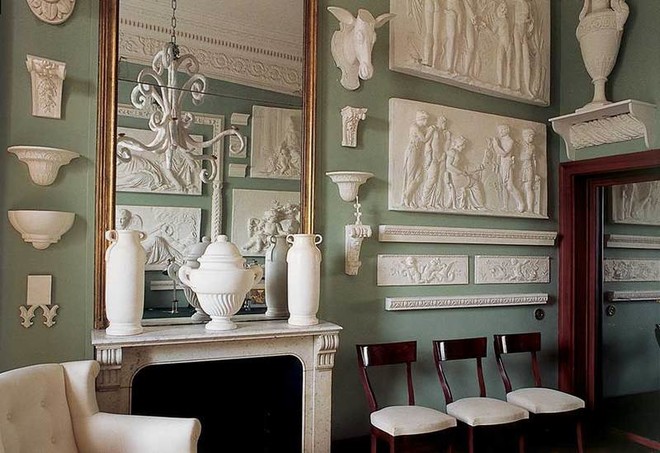 5. SHOW WHAT YOU HAVE! Any collection can become an ornament of an interior: whether it be a collection of buttons, ancient irons or thimbles. It is important to properly beat it. The ordered placement of objects with similar qualities enhances their artistic influence. Snow-white gypsum, from which copies of neoclassical cornices, vases, cartouches and garlands were cast, became the main hero of the interior of one of the rooms in the estate of the decorator Jacques Garcia. Even the upholstery of the sofa and antique English mahogany chairs supports this topic. The chandelier is made according to the design of Garcia himself, and also of plaster!
5. SHOW WHAT YOU HAVE! Any collection can become an ornament of an interior: whether it be a collection of buttons, ancient irons or thimbles. It is important to properly beat it. The ordered placement of objects with similar qualities enhances their artistic influence. Snow-white gypsum, from which copies of neoclassical cornices, vases, cartouches and garlands were cast, became the main hero of the interior of one of the rooms in the estate of the decorator Jacques Garcia. Even the upholstery of the sofa and antique English mahogany chairs supports this topic. The chandelier is made according to the design of Garcia himself, and also of plaster! 6.IRONIZE! It is not necessary to feel awe in front of a work of art. You can also make fun of it. Look at the royal meal that decorators Roland de Bevillon and Maurice Savinel prepared for "The Hare King" by Mireille Mardereau. Especially since it is hanging not just anywhere, but in the dining room!
6.IRONIZE! It is not necessary to feel awe in front of a work of art. You can also make fun of it. Look at the royal meal that decorators Roland de Bevillon and Maurice Savinel prepared for "The Hare King" by Mireille Mardereau. Especially since it is hanging not just anywhere, but in the dining room!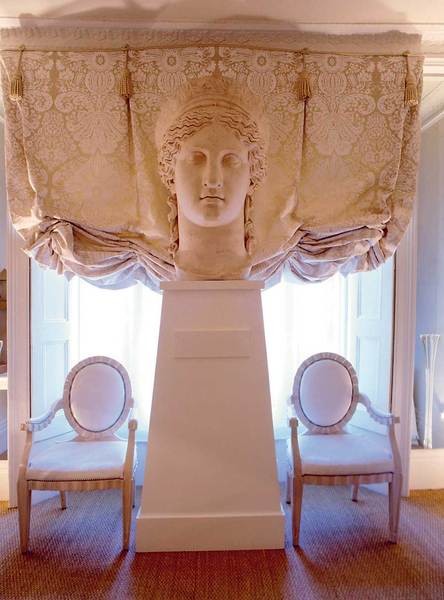 7.PLAY WITH SCALES! Forget the words "this painting/sculpture/engraving is too big/small for my room". Nothing amazes a person more than a shift in the usual coordinate system. You just need to be able to manipulate it. Some giant wooden horse does not necessarily "crush" a small bedroom. It can completely transform it. Designer Stephen Ryan was not afraid to erect a giant pedestal with a giant bust in the living room of his London home. At first glance, you understand that in front of you is "great art!" In every sense of the word.
7.PLAY WITH SCALES! Forget the words "this painting/sculpture/engraving is too big/small for my room". Nothing amazes a person more than a shift in the usual coordinate system. You just need to be able to manipulate it. Some giant wooden horse does not necessarily "crush" a small bedroom. It can completely transform it. Designer Stephen Ryan was not afraid to erect a giant pedestal with a giant bust in the living room of his London home. At first glance, you understand that in front of you is "great art!" In every sense of the word.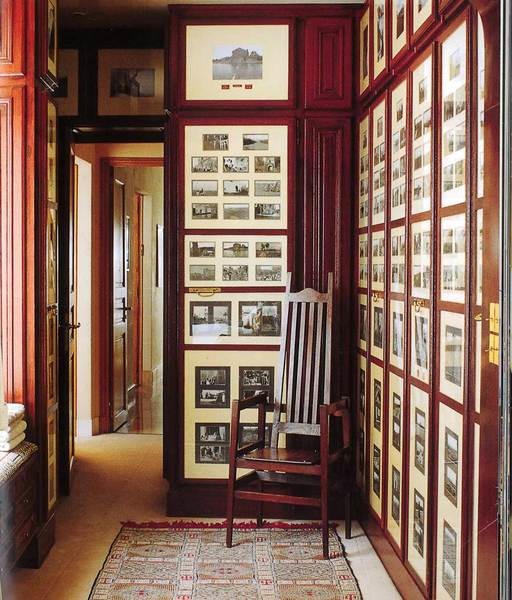 8.DON'T BE AFRAID TO REPEAT! If your collection contains many works of the same format (for example, engravings or photographs), they can be used in a new capacity as a kind of decorative material. In the dressing room of the French designer Hubert le Gall, the rhythm is set by vintage photographs with views of Morocco from an album he bought at an auction at the Hôtel Drouot. The owner simply inserted them into a passe-partout and attached them to the glass doors of the built-in wardrobes from the inside.
8.DON'T BE AFRAID TO REPEAT! If your collection contains many works of the same format (for example, engravings or photographs), they can be used in a new capacity as a kind of decorative material. In the dressing room of the French designer Hubert le Gall, the rhythm is set by vintage photographs with views of Morocco from an album he bought at an auction at the Hôtel Drouot. The owner simply inserted them into a passe-partout and attached them to the glass doors of the built-in wardrobes from the inside.

Making Money with Desserts: Success Stories
Evgeniya Polischuk (Fedutinova) instagram:@evgeniyafedutinovavk.com/janeshomebaking– It all started with baking for family and friends. Gradually, I started posting photos of my baked goods on Instagram – and orders started coming in. I made my first custom-made cake on October 13, 2014, and a little earlier I started making macaroons and cupcakes. You could say that the business “found me”, I am very […]

Soups are cold recipes with photos
Cold cucumber soup with yogurt and lemonsorbet from the chef of the restaurant La Taverna Alexander Zhurkin Photo: Getty Images Ingredients: Plain yoghurt – 125 g Cucumber – 150 g Lemon/lime sorbet – 50 g Cocktail shrimp – 24 g Fresh ginger juice – 1 g Lime juice – 5 g Fresh orange juice – 5 g Parsley – 1 g Pink pepper – 1 g Watercress – […]

barbeque kebab
Pork tenderloin in glaze Photo:Dmitry Bayrak/dbstudioPreparation time: 20 minutes + marinating time.Calories: 454 kcal per serving.For 4 servings: 4 pork tenderloins (approximately 300 g each), 1 onion, 2 cloves of garlic, 1 tsp. lemon zest, 1 tsp. lemon juice, a pinch of ground cumin, coriander and turmeric, 1 tbsp. vegetable […]

Pierre Duacan: dietary recipes: Ducane diet
Beetroot soup Photo:Season’S, Luxury Hotels RepresentationYou will need:· Boiled beetroot – 60 g· Fresh cucumbers – 20 g· Red radish – 20 g· Green onions – 10 g· Egg – 1 pc.· Drinking mineral water – 200 g· Salt – 1 gPreparation:· Boil the egg and beetroot.· Grate the cucumbers, radish and part of the beetroot. Put everything […]


